Mint is a herb that is popular all over the world. Its origins are traced to either Africa, Asia, or Europe. This plant has also shown a significant application in the medical and cosmetic industries. But, is mint safe for guinea pigs, and are there any possible risks of them eating mint?
So, can guinea pigs eat mint? Guinea pigs can eat mint, but the amount of mint you feed your guinea pig should be limited. Mint is relatively safe and nutritious for guinea pigs. There are many types of mint, some of which are safer for guinea pigs than the others.
Now that you know that guinea pigs can eat mint, it is time to learn some other important details about the plant. This includes the benefits, nutrients, risks, and quick facts of the mint as potential food for guinea pigs. Let’s start!
Table of Content
Is Mint Healthy for Guinea Pigs? | Health Benefits
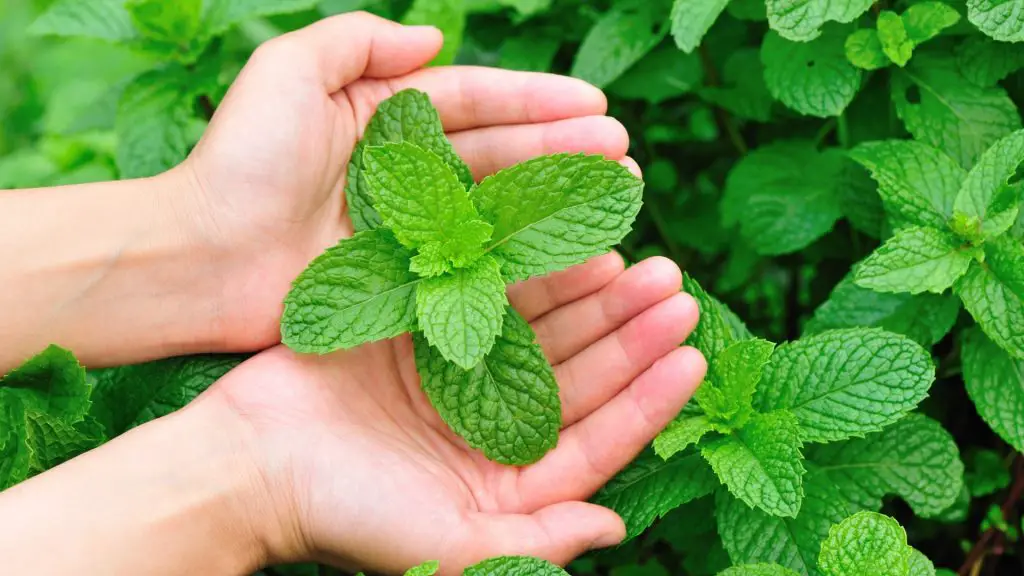
Mints have an array of benefits apart from their amazing taste and smell. The following are some of the best-known benefits of the mint plant:
Aids in Digestion
Mint has some characteristics that are known to help deal with stomach upsets and disorders. In most cases, digestive problems appear by food staying too long in the stomach without going through the rest of the digestive system.
Mint improves digestion, thus reducing the chances of gastrointestinal complications in the guinea pig’s body.
Brain Performance
Some of the compounds found in certain types of mint have shown the ability to boost the performance of some brain functions.
The brain controls most of the processes in the body. Having a healthy brain equals a healthy life for your little pet.
Aids in Weight Loss and Control
Dietary fiber found in mint can induce satiety. When your guinea pig eats the mint it will reduce the food intake, which in the long run, reduces the overall number of calories taken into the body. When calories are reduced, the whole process will lead to the loss of weight and control as well.
Prevents Constipation
Mint has dietary fiber which is known for its ability to boost bowel movements. Sometimes your guinea pig may have problems passing the stool. Giving them foods rich in fiber such as mint can be of great help.
Mint Improves Eye Health
Due to the presence of vitamin A in the plant, it can improve eyesight and macular health. Vitamin A helps eliminate any infections that may affect the guinea pig’s eye.
The Plant Boosts Immunity
In case your guinea pig’s immune system is weak, you can give it mint as well. This is due to vitamin A. Apart from boosting eyesight, it also helps to improve the immunity of your pet.
Eliminates Free Radicals
Free radicals are produced throughout the metabolic process, however, they are harmful to your guinea pig’s health. Mint has antioxidants that help in the elimination of free radicals in the body.
Nutrition Facts of Mint for Guinea Pigs
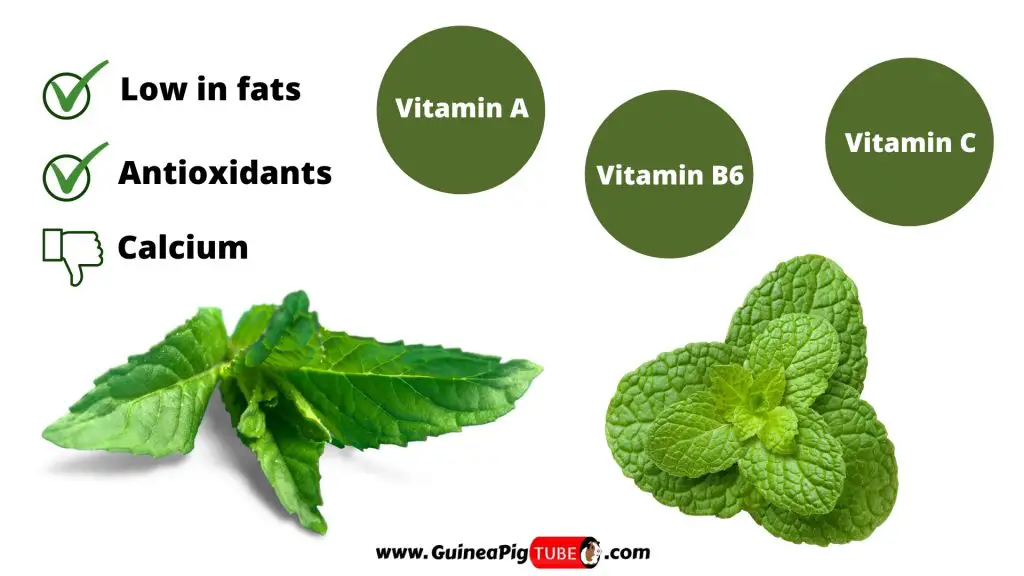
The following table is the nutrition facts that you can find in 100 g of the two different types of mint (fresh spearmint, and fresh peppermint):
| Nutrients | Spearmint | Peppermint |
| Energy | 44 kcal | 70 kcal |
| Carbs | 8.41 g | 14.89 g |
| Protein | 3.29 g | 3.75 g |
| Total lipid (fat) | 0.73 g | 0.94 g |
| Cholesterol | 0 mg | 0 mg |
| Dietary Fiber | 6.8 g | 8 g |
| Calcium | 199 mg | 243 mg |
| Copper | 0.24 mg | 0.329 mg |
| Iron | 11.87 mg | 5.08 mg |
| Magnesium | 63 mg | 80 mg |
| Manganese | 1.118 mg | 1.176 mg |
| Zinc | 1.09 mg | 1.11 mg |
| Phosphorus | 60 mg | 73 mg |
| Sodium | 30 mg | 31 mg |
| Potassium | 458 mg | 569 mg |
| Vitamin C | 13.3 mg | 31.8 mg |
| Vitamin B-6 | 0.158 mg | 0.129 mg |
| Vitamin A | 203 µg | 212 µg |
| Folates | 105 µg | 114 µg |
| Niacin | 0.948 mg | 1.706 mg |
| Riboflavin | 0.175 mg | 0.266 mg |
| Thiamin | 0.078 mg | 0.082 mg |
Is Mint Bad for Guinea Pigs? | Possible Risks
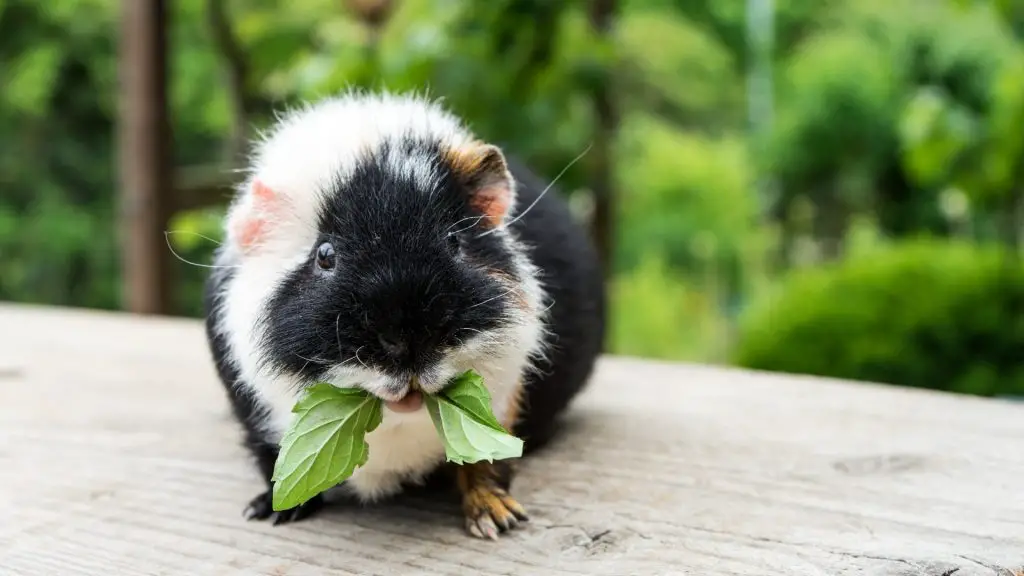
There are also a few risks that may face your guinea pig. Take a look at the following possible risks:
Lack of Vitamin C
As we can see in the table above, spearmint lacks an essential nutrient needed by guinea pigs. Vitamin C is vital for guinea pig’s life because they can neither create nor store this vitamin on their own. Denying your guinea pig food that contains this vitamin is equivalent to shortening their lifespan. This is because they need this vitamin to survive.
On the other side, peppermint is loaded with vitamin C and other nutrients that benefit your guinea pig. This is wrong to say that spearmints have zero nutritional content. But the fact that they have little to no vitamin C makes it useless for guinea pigs. So, if you want to give your guinea pigs mint, it’s better to choose peppermint than spearmint.
Allergy
Some types of mint may have allergic effects on your guinea pig. In case you offer your guinea pig a mint and later notice that it has some allergic reactions, it is best to stop giving them this herb. In case the situation gets out of hand, you need to get advice from a qualified vet.
Digestion Problems
Mint leaves can contain pests or chemicals on them, which can cause serious problems to your guinea pig. That is why it is wise to wash the plant thoroughly before feeding it to your cavy. Washing will remove any pests or chemicals that may be residing on the plant.
Also, if you feed too much mint to your guinea pigs, it will lead to stomach problems. If you notice symptoms such as diarrhea, vomiting, or gases, stop feeding too much mint to them and regulate their diet.
Urinary Problems
The amounts of calcium and sodium in mint are quite big, which can be a problem for guinea pigs. If your guinea pigs consume foods rich in calcium and sodium, they may develop urinary problems.
Sodium and calcium can cause the development of bladder or kidney stones in guinea pigs. This is why you need to be careful with the serving sizes of mint and provide them with foods that are low in calcium.
Serving Size and Frequency of Mint for Guinea Pigs
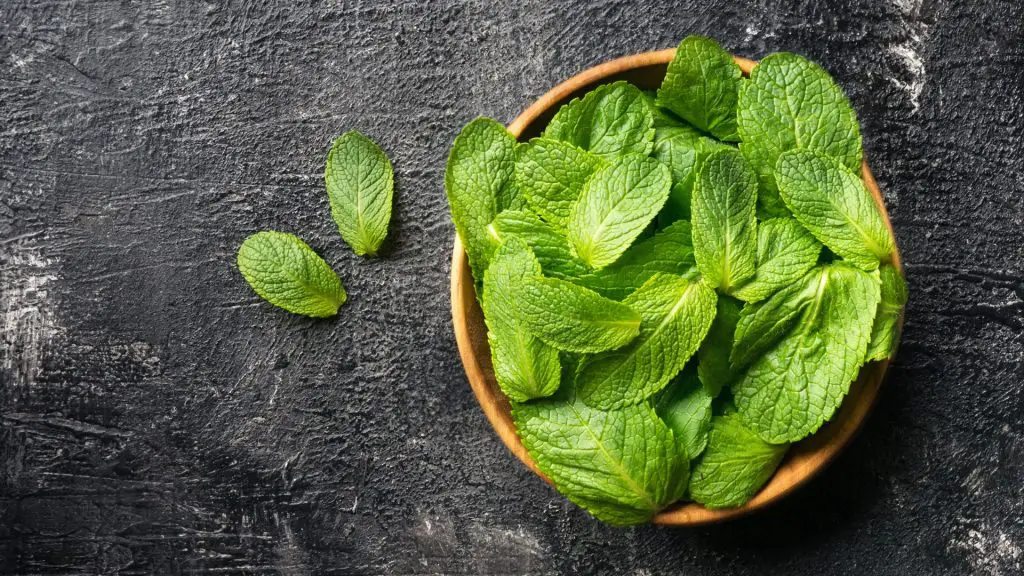
Can Guinea Pigs Have Mint Every Day?
Guinea pigs can’t eat mint every day because of the mentioned risk that may happen. If eaten everyday mint can lead to some health problems, such as bladder and kidney stones.
So, it’s important to regulate the frequency of mint for guinea pigs. Give it to them as a supplementary meal, or just as a treat, one or two times per week.
How Much Mint Can Guinea Pigs Eat?
Guinea pigs shouldn’t eat too much mint, and it’s recommended to give one or two leaves of mint per one guinea pig. If you give them too much mint, it may cause some serious stomach problems such as diarrhea, vomiting, or gases.
Guinea pigs love to eat, and they sometimes don’t know when to stop eating. So, you need to be careful with serving sizes of mint and other food as well.
Do Guinea Pigs Like Mint?
Usually, guinea pigs like mint, but sometimes some guinea pigs may not prefer the taste or smell of the mint. Please do not force your pet to eat what it doesn’t want to.
There are many other herbs that you can feed your guinea pigs. Besides mint and, of course, hay, most of them like to eat basil, thyme, parsley, rosemary, dill, and others.
More Information About Guinea Pigs and Mint
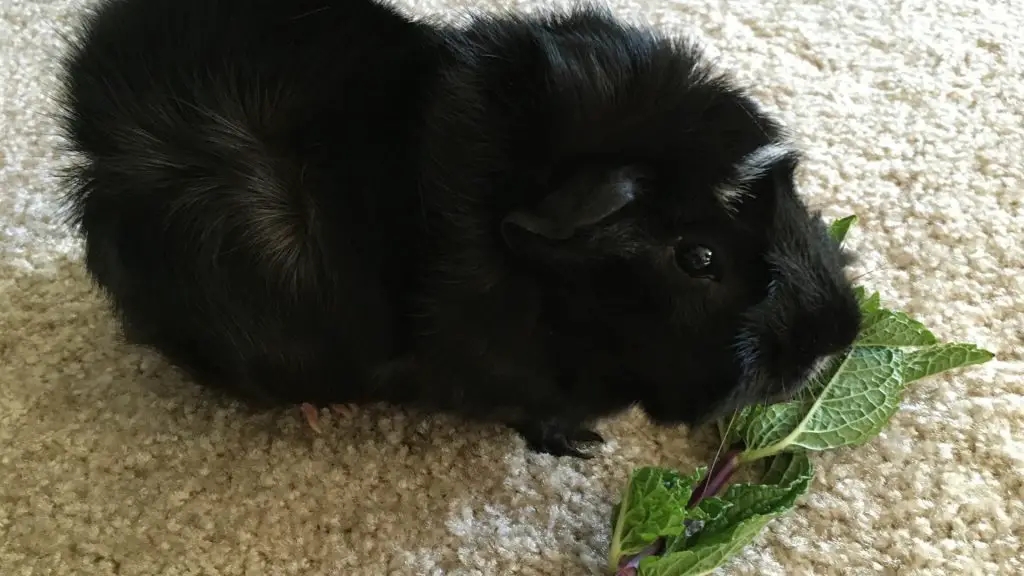
Can Guinea Pigs Eat Fresh Mint?
Guinea pigs can only eat fresh mint. Never give them mint that has stayed for too long. Spoiled mint will change its smell and become soft and different in color. You can store mint in the water to keep it fresh for a little bit longer.
Also, never give them cooked meals with mint. Guinea pigs can’t eat any processed or cooked food because of their digestive system. So, feed them only fresh mint and other fresh herbs, fruits, and vegetables.
Can Guinea Pigs Eat Mint Leaves?
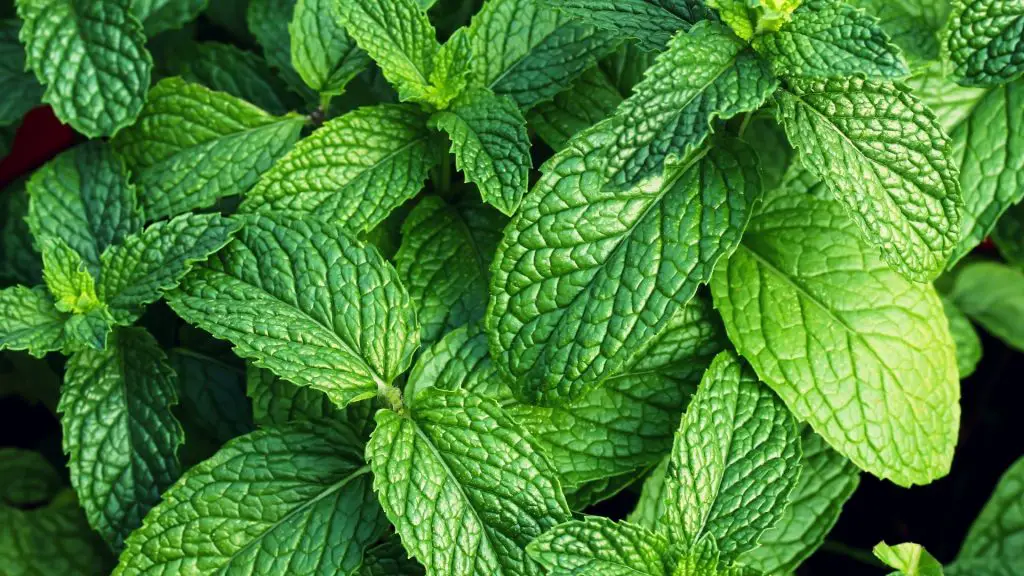
Guinea pigs can eat mint leaves, and that’s the main part of mint that they enjoy eating. Also, give them only well-washed and fresh mint leaves. However, mint leaves can be bad for guinea pigs if you give them every day and in large serving sizes, or if your guinea pig is allergic to mint leaves.
Can Guinea Pigs Eat Mint Flowers?
Guinea pigs can eat mint flowers but only in moderation. These flowers are edible even for humans. They have a pleasant taste, just like mint leaves but a little milder flavor. There are many other flowers that guinea pigs can eat, and one of their favorites is dandelion flowers.
Can Guinea Pigs Eat Mint Stalks/Mint Stems?
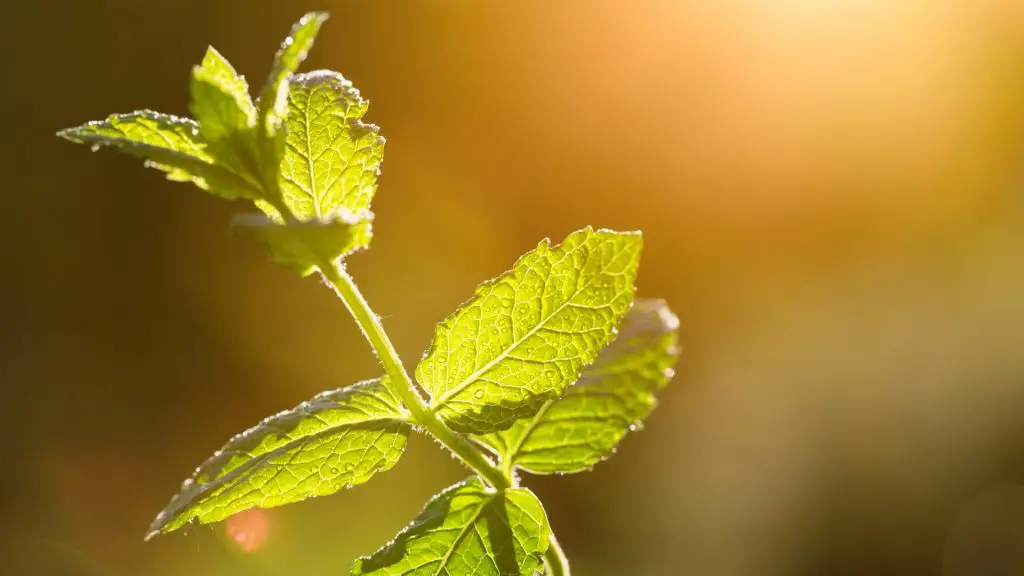
Guinea pigs can eat mint stalks or mint stems, and they are completely safe for them. You only need to be careful with serving sizes and frequency. As we can see, guinea pigs can eat different parts of mint, and only the mint root isn’t good for them.
Unfortunately, your guinea pig cannot eat mint roots. Remember that the primary meal of guinea pigs regarding mint entails fresh mint leaves, flowers, and stems. Therefore, it is essential to separate the root from the stem before serving to guinea pigs.
Can Guinea Pigs Eat Chocolate Mint?
Chocolate mint is a type of peppermint. Considering that peppermint is the best option for guinea pigs to feed, guinea pigs can eat chocolate mint as well. The only thing you need to be careful with is the serving sizes.
Chocolate mint may be very delicious to guinea pigs because this sort of peppermint has some nuances of chocolate in taste and smell. Also, just like peppermint, chocolate mint is rich in vitamin C and vitamin A.
Can Guinea Pigs Eat Garden Mint?
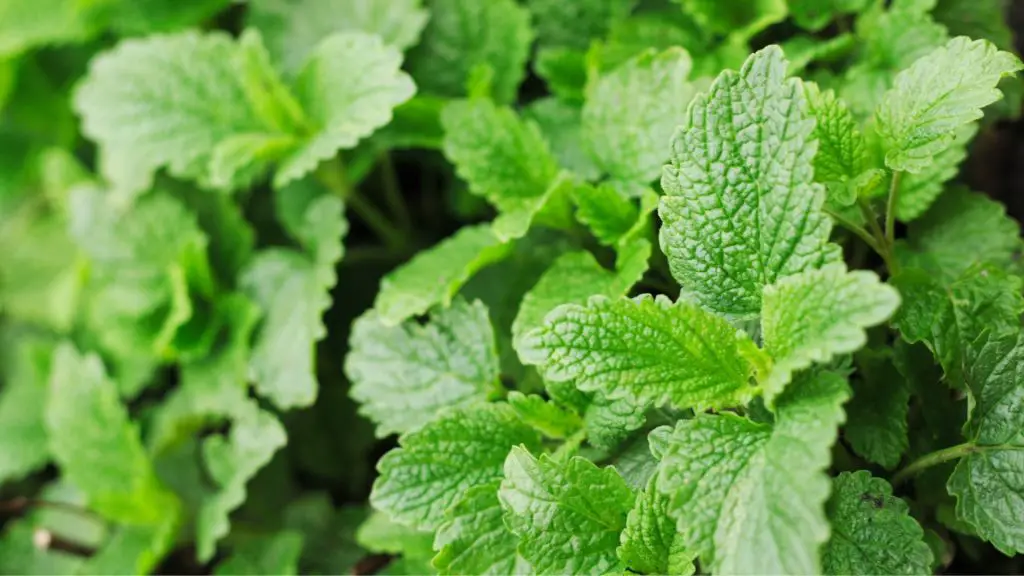
Spearmint is also known as garden mint, and it has a sweet, less minty flavor than peppermint. Because of its taste, some people use to call it sweet mint as well.
Guinea pigs can eat garden mint, but you need to give it to guinea pigs only in moderation due to calcium content. Also, garden mint or spearmint lacks vitamin C. So, when feeding spearmint to guinea pigs, be sure to give also some other food rich in vitamin C. This is important because guinea pig needs around 10 to 30 mg of vitamin C daily.
Can Guinea Pigs Eat Lemon Mint?
Guinea pigs can eat lemon mint, which has a mild and aromatic lemon flavor. This type of mint is also known as a balm mint or lemon balm.
As with any other mint, feed guinea pigs only one or two leaves of lemon mint a few times per week. Lemon mint may be good for guinea pigs because some studies have reported that this mint has good antioxidant capabilities.
Can Guinea Pigs Eat Mint Candy?
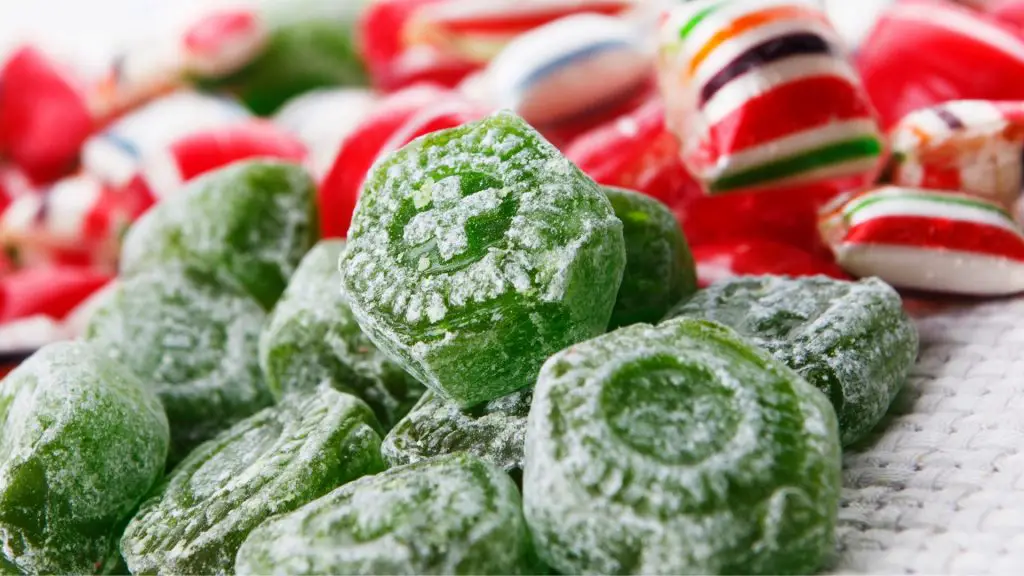
Guinea pigs can’t eat mint candy because it presents to them a serious choking hazard. Mint candies aren’t good for guinea pig’s teeth and their sensitive digestive system.
There are also famous polo mints. Guinea pigs can’t eat polo mints as well. Even if they are a little softer to eat than mint candy, they also present a choking hazard to guinea pigs. Our pets shouldn’t eat any candies or processed human foods, especially ones that are rich in sugars.
Quick Facts on Mint
The following are some of the best-known facts about mint:
- Most mint strains can survive for two years or even more than that in the wild.
- In ancient medicine, the mint was used to alleviate chest pains and stomach aches.
- Because of its cooling effect, mint can relieve burns on the skin.
- The plant’s leaves are used in the cosmetic industry to make creams and lotions for skincare.
- Mint leaves produce menthol and essential oils that are used in the production of toothpaste and mouthwash.
- The favorite mojito cocktail drink is made using several ingredients, which include mint.
- Mint is equally used in the confectionery industry for making chewing gums, cakes, cookies, and other foods.
- The most popular strains of mint include spearmint, apple mint, and peppermint.
- The mint plant can grow anywhere from 4 to 47 inches.
- The stem of the mint plant has a square shape.
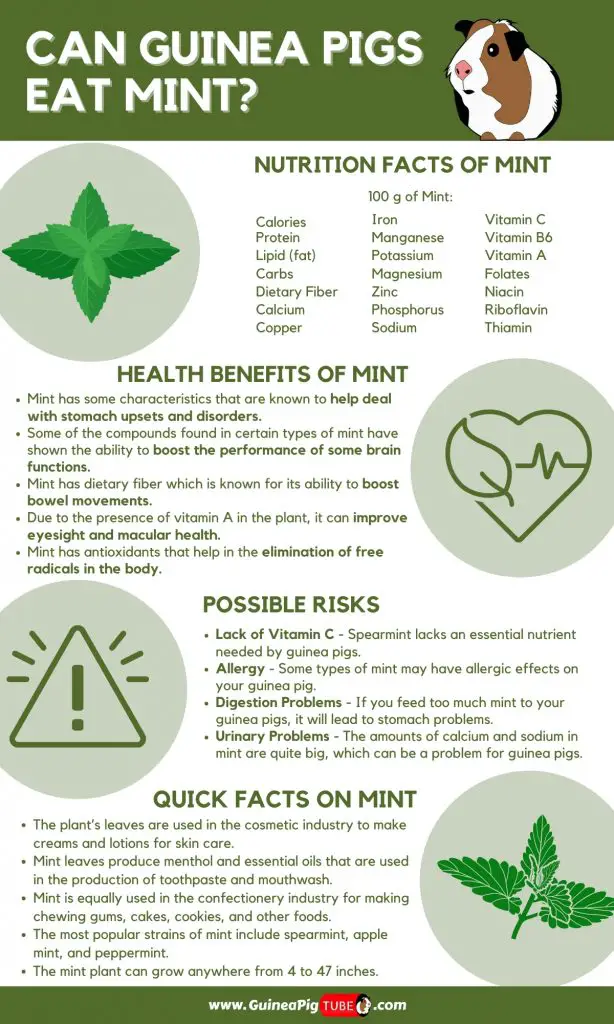
We made a full list of foods that guinea pigs can and can’t eat (150+ Types of Foods). Be sure to also check our recommended products page for everything you will ever need to assure a happy life for your guinea pigs. Hope this information was helpful and you have found the answer you were looking for.
List of Sources
Nutrient Requirements of Laboratory Animals: Fourth Revised Edition
The Effects of Diet on Anatomy, Physiology and Health in the Guinea Pig
